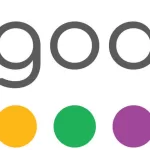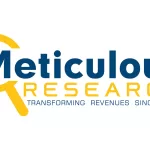In the ever-evolving world of digital marketing, staying ahead of Google’s algorithm updates is critical for maintaining visibility, driving traffic, and achieving sustainable growth. As we approach 2025, Google continues to refine its algorithms to prioritize user experience, relevance, and authenticity. For marketers and brands, understanding these changes is no longer optional—it’s a necessity.
This article breaks down the key 2025 Google algorithm updates, their implications, and actionable strategies to adapt your SEO and content efforts effectively.
The Evolution of Google’s Algorithm: A Quick Recap
Google’s algorithm has come a long way since its early days of keyword matching and basic backlink analysis. Over the years, updates like Panda, Penguin, Hummingbird, and BERT shifted focus toward quality content, user intent, and semantic search. The 2023 Helpful Content Update further emphasized the need for people-first content, while Core Web Vitals cemented technical SEO as a ranking cornerstone.
In 2025, Google is doubling down on artificial intelligence (AI), user experience (UX), and contextual understanding to deliver hyper-relevant, trustworthy results. Let’s dive into what’s new—and how to prepare.
Key 2025 Google Algorithm Updates Explained
1. AI-Powered Search Generative Experience (SGE)
Google’s Search Generative Experience (SGE), powered by advanced AI models like MUM (Multitask Unified Model), is transforming how search results are generated. Instead of merely listing links, SGE provides instant, summarized answers to complex queries by synthesizing information from multiple sources.
Why It Matters:
- Zero-click searches may rise, reducing traditional organic traffic.
- Content must be comprehensive, factual, and structured to be cited by AI.
- Brands that fail to optimize for SGE risk losing visibility.
Action Steps:
- Create long-form, pillar content that answers interrelated questions.
- Use structured data (Schema markup) to help AI understand your content.
- Focus on authoritative sources and cite credible references.
2. Enhanced E-E-A-T (Experience, Expertise, Authoritativeness, Trustworthiness)
Google’s E-E-A-T framework, now expanded to include “Experience,” is stricter than ever. The 2025 update evaluates not just who creates content but how well they demonstrate real-world experience in the topic.
Why It Matters:
- Health, finance, and YMYL (Your Money, Your Life) niches face heavier scrutiny.
- User-generated content (e.g., forums, reviews) may gain traction if backed by expertise.
- Brands without clear author credentials or experiential proof could see rankings drop.
Action Steps:
- Highlight author bios with verifiable experience (e.g., certifications, case studies).
- Publish user testimonials and industry partnerships to boost trust.
- Avoid generic content; lean into niche expertise and firsthand insights.
3. Core Web Vitals 2.0: Speed Meets Interaction
Building on the original Core Web Vitals, Google’s 2025 update introduces new metrics:
- Interaction to Next Paint (INP): Measures responsiveness during user interactions.
- Time to First Byte (TTFB): Evaluates server response time.
Why It Matters:
- Sites with slow server speeds or clunky interfaces will struggle.
- Mobile-first indexing now accounts for 95% of global rankings.
Action Steps:
- Audit site speed using Google’s PageSpeed Insights.
- Optimize hosting solutions and reduce JavaScript bloat.
- Prioritize mobile UX with responsive design and accelerated mobile pages (AMP).
4. Semantic Search & Contextual Intent
Google’s algorithms now better understand context over keywords. For example, searching “best budget winter jackets” considers factors like geographic location, seasonal trends, and price fluctuations.
Why It Matters:
- Keyword stuffing becomes obsolete; natural language prevails.
- Content must align with user intent at different funnel stages (e.g., informational vs. transactional).
Action Steps:
- Use tools like Google’s Natural Language API to analyze content relevance.
- Build topic clusters around semantic keywords (e.g., “sustainable winter wear” vs. “cheap jackets”).
- Optimize for voice search with conversational phrases (e.g., “How do I…”).
5. Anti-Spam AI: Fighting Low-Quality Content
To combat AI-generated spam, Google’s 2025 update employs sophisticated detectors to identify synthetic or plagiarized content. Sites with excessive automation or thin content face harsh penalties.
Why It Matters:
- Over-reliance on AI content tools (e.g., ChatGPT) without human editing is risky.
- Authenticity and originality are non-negotiable.
Action Steps:
- Combine AI efficiency with human oversight for editing and fact-checking.
- Regularly audit content for duplication or irrelevance.
- Invest in original research (e.g., surveys, whitepapers) to stand out.
The Impact on Marketers and Brands
These updates signal a broader shift: Google rewards value-driven, user-centric strategies while penalizing shortcuts. Brands that adapt will benefit from:
- Higher rankings and organic traffic.
- Improved brand authority and customer trust.
- Better alignment with future algorithm changes.
Conversely, businesses clinging to outdated tactics (e.g., buying backlinks, keyword stuffing) will face steep declines.
Actionable Strategies for 2025 Success
- Audit and Optimize for E-E-A-T
- Showcase team expertise through “About Us” pages and LinkedIn integrations.
- Add expert reviews or peer validations to high-stakes content.
- Double Down on Technical SEO
- Fix crawl errors, improve site architecture, and streamline navigation.
- Implement lazy loading for images and videos.
- Create AI-Compatible Content
- Structure articles with clear headings (H2, H3), bullet points, and FAQs.
- Use data tables and infographics to enhance clarity.
- Leverage Video and Visual Search
- Optimize video transcripts and alt text for image search.
- Experiment with Google Lens-friendly content.
- Monitor SGE Impact
- Track if your content appears in AI-generated snippets using Google Search Console.
- Update old posts to meet SGE’s depth and accuracy standards.
Conclusion: Adaptability is Key
The 2025 Google algorithm updates underscore a simple truth: the future of SEO lies in empathy. By prioritizing user needs, leveraging ethical AI, and delivering frictionless experiences, marketers and brands can thrive amidst change.
Stay proactive, keep learning, and remember—the best way to “game” the algorithm is to create genuinely helpful content. After all, Google’s ultimate goal mirrors yours: to serve your audience better than anyone else.
Ready to future-proof your strategy? Start auditing your SEO today—before the competition does.











